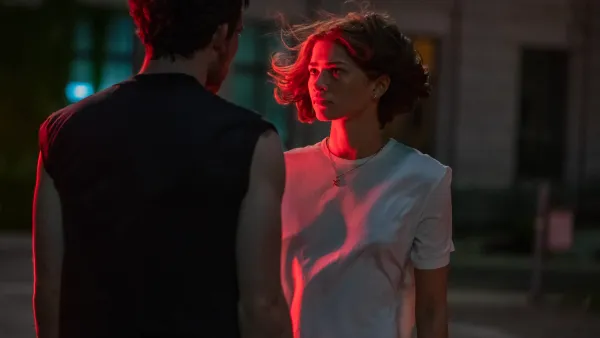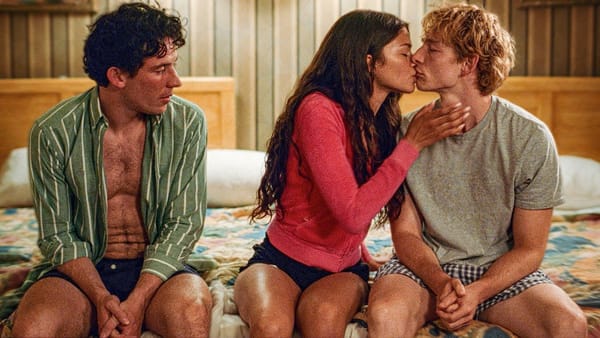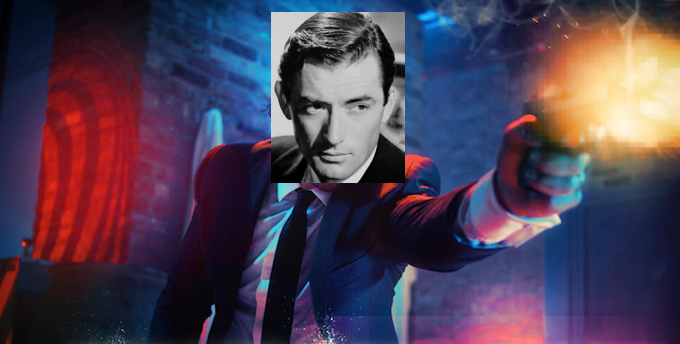What to Watch: "Lost Angel: The Genius of Judee Sill"
A new doc about a haunted and haunting singer-songwriter; plus reviews of "The Beast," "The Invisible Extinction," "La Chimera" and "The Greatest Hits"
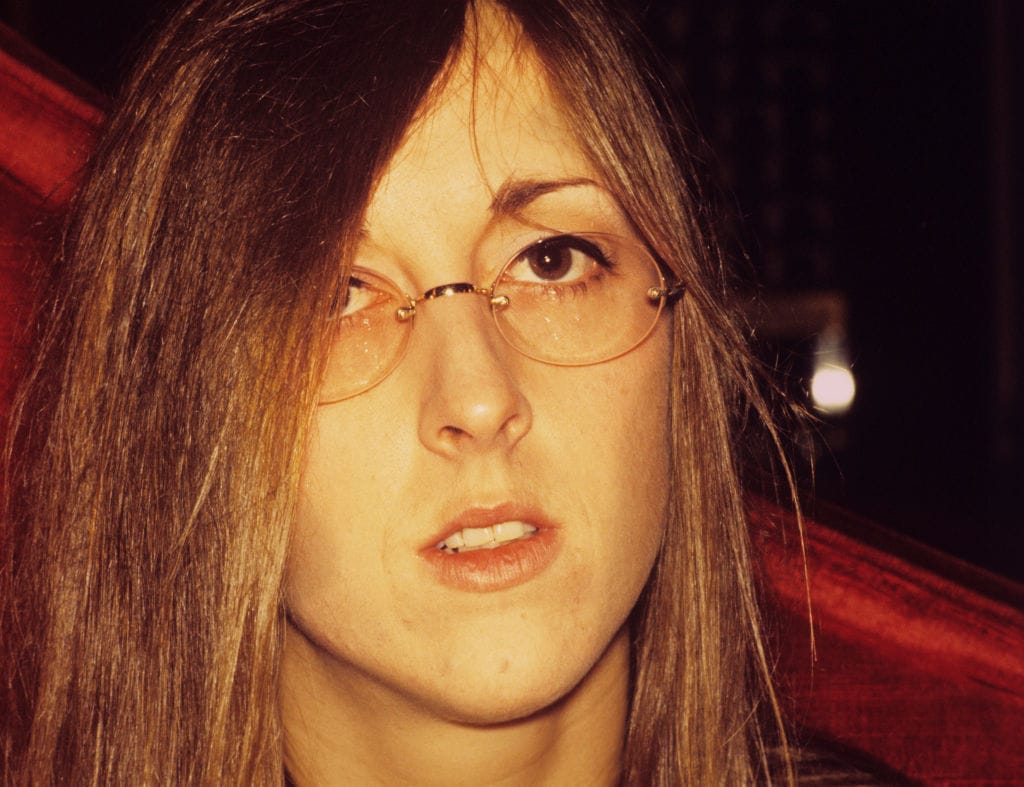
There are certain singer-songwriters who, the first time you hear them, make the hairs on the back of your neck stand up. Oddly, a lot of them tend to be dead. Nick Drake is the poster boy for this sort of rock ‘n’ roll ghost: No one listened to him while he was alive, but his music never quite went away after his 1974 death from an overdose of antidepressants – that voice haunted listeners like a rebuke – and in 1999 a Volkswagen commercial finally put him over the top.
Many such phantoms have been resurrected in recent years, as the ease and ubiquity of streaming technology makes it easier to spread the word about, say, Connie Converse or Karen Dalton or Arthur Russell. Or Judee Sill, who was the first act David Geffen signed to his new Asylum Records in 1971, but who was dead of an OD before the decade was out and whose two albums, “Judee Sill” (1971) and “Heart Food” (1973), were quickly deleted. You won’t find her in any edition of “The Rolling Stone Record Guide,” but the magpie tendencies of young millennial musicians like Fleet Foxes have raised Sill back up into visibility on the strength of her haunting voice, baroque arrangements, and, um, dramatic back-story.
Now there’s a documentary about her – of course there is – called “Lost Angel: The Genius of Judee Sill” (⭐ ⭐ ⭐) that’s newly arrived on Amazon, Apple TV, and YouTube as a $5 rental. It has its good points (rare interview recordings, access to the artist’s journals) and a few rock-doc cliches (animated song sequences), but attention must be paid: If Sill’s life was a slow-motion car wreck with a bitter, intelligent dreamer in the driver’s seat, the music lingers on, equal parts Bach, the Beats, and the wordless keening of an addict seeking release in God or sex or heroin. Maybe all three – why not? It was L.A. and it was the ‘70s.
Sill looked a bit like a female John Lennon – peevish and wry behind wire-rimmed glasses – but she arrived on the scene with serious Bad Girl cred, having done time in a girl’s reformatory for armed robbery as a thrill-crazy teenager. She learned to play gospel piano in the clink, and her songs have a churchy yearning in the chords and lyrics. She loved Bach cantatas, too, and worked their vocal lines and fugal intertwinings into the framework of singer-songwriter pop. There was nothing like “Judee Sill” when it came out in 1971, nor was there anything like the first single “Jesus Was a Cross Maker.”
Which proved to be a problem: The music was ravishing but arguably too idiosyncratic for Top 40 airplay, and Sill’s label compounded the problem by putting her on the road opening for high-volume rock acts. When the first album didn’t sell, Asylum declined to put a publicity push behind the second, despite the presence of “The Kiss,” the song that more than any others has sustained the Sill mystique. Geffen’s other female singer-songwriter, Joni Mitchell, started taking up more of the label's attention.
By then, Sill’s anger and frustration were getting the better of her. Did she refer to Geffen using a gay slur during a concert, or camp out on his lawn to get his attention, and did she lose his favor as a result? Those are the legends. “Lost Angel” directors Andy Brown and Brian Lindstrom bring on Geffen himself, now 81 and pink with the best cosmetic upkeep a Hollywood fortune can buy, to insist that no such things happened – that Judee was merely the talented victim of public disinterest and her own addictions.
Perhaps. But it’s true that the counterculture cowboy milieu of the L.A. music scene did her no favors. She fell hard for country-rocker J.D. Souther – the inspiration for “Jesus Was a Cross Maker” – who by his own admission here kept dumping her for Linda Ronstadt. More to the point, “Lost Angel” interviews a number of Sill’s musical heirs – Shawn Colvin, Laura Viers, Natalie Mering a.k.a. Weyes Blood, Adrienne Lenker of Big Thief – who point out that Joni Mitchell had the good fortune to be a genius and a babe, whereas Judee Sill was in the context of early-70s pop culture mostly just a genius.
The final minutes of “Lost Angel” are depressing in a predictable “Behind The Music” way: Once the dream of fame had receded, Sill opted for the easier reveries of coke, heroin – whatever was on the coffee table, basically. There was a shitty new boyfriend, a back injury that took her further out of the business, and after a while Sill seems to have simply given up. She died in 1979 of acute cocaine and codeine intoxication, leaving either a suicide note or just some ideas for her next song – her friends disagree. “Did she know how great she was?” the filmmakers ask Souther. “Yeah,” he nods. “That was part of the bitterness.”
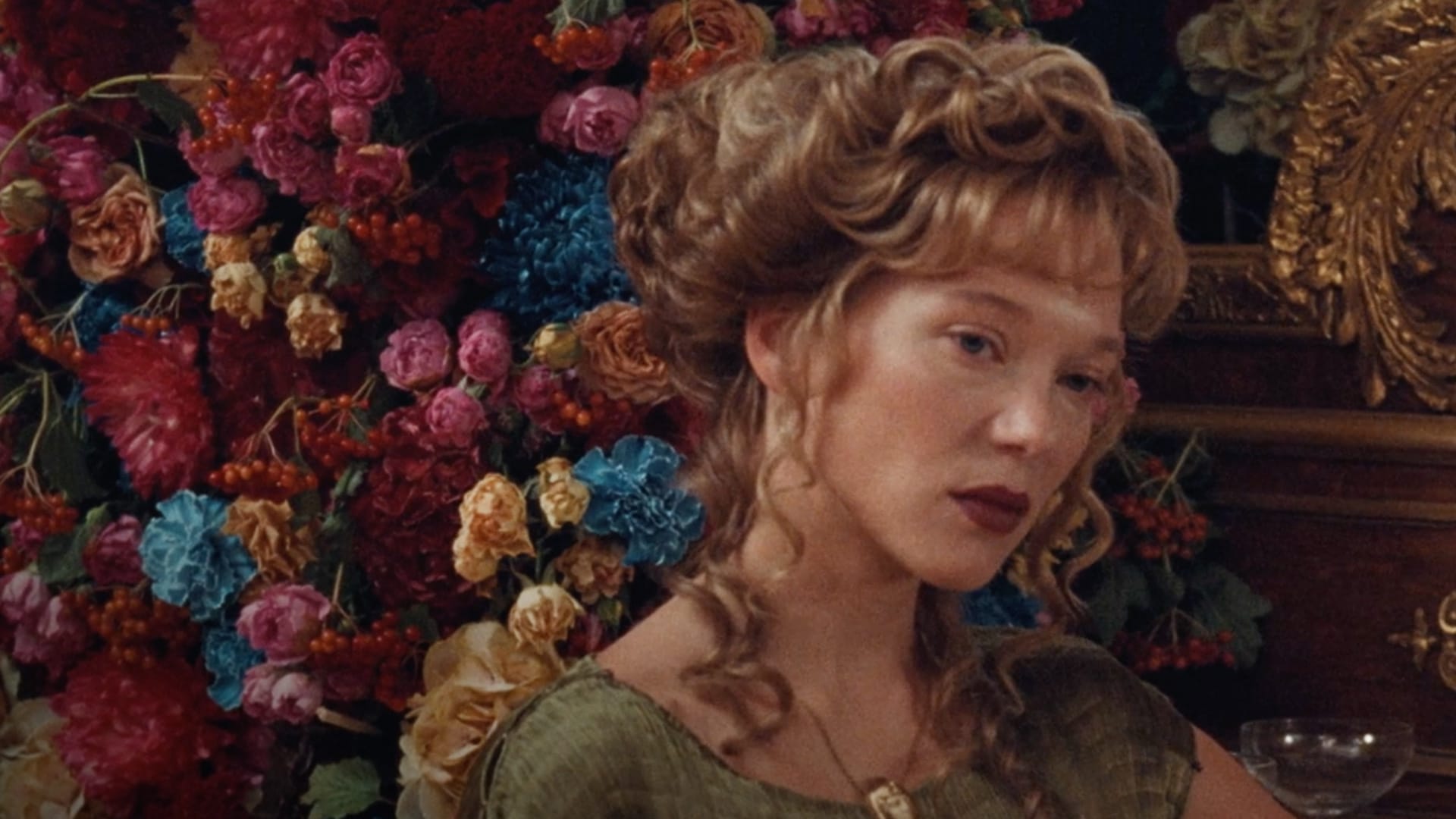
Appearing in local theaters this week: “The Beast” (⭐ ⭐), which takes a Henry James novella (1903’s “The Beast in the Jungle”) and time-warps it into a multi-genre/multi-century sci-fi philosophical whatchamacallit that wears out its welcome two-thirds of the way into a nearly two-and-a-half hour running time. But almost all of those 146 minutes feature Léa Seydoux (above) – as a pianist in Belle Epoque Paris, an aspiring actress in 2014 Los Angeles, and a lost soul in post-apocalyptic 2044 – and there are plain old lizard-brain pleasures to be had in watching one of the screen’s most beautiful women in a variety of meticulously appointed sets and costumes. Apparently, the world in 2044 will be run by AI overlords who urge the remaining humans to “purify” their DNA and become emotionless drones; to do so, Gabrielle (Seydoux) needs to revisit her past lives (I think) to confront a nameless dread that has accompanied her since the beginning of time. George McKay (“1917”) is a dreamy suitor in the 1910 sequences – they deserve their own movie, really – and a creepy homicidal incel based on murderer Elliot Roger in the 2014 scenes. Written and directed by French auteur terrible Bertrand Bonello, “The Beast” is willfully inscrutable, very talky, and gorgeous to look at, with references points as varied as Godard’s “Alphaville” and Lynch’s “Blue Velvet,” with an added soupçon of Cronenberg. I gave up trying to make heads or tails of it after a while, but your mileage may vary – it’s an ambitious film that seems to have only partly escaped from its maker’s head.
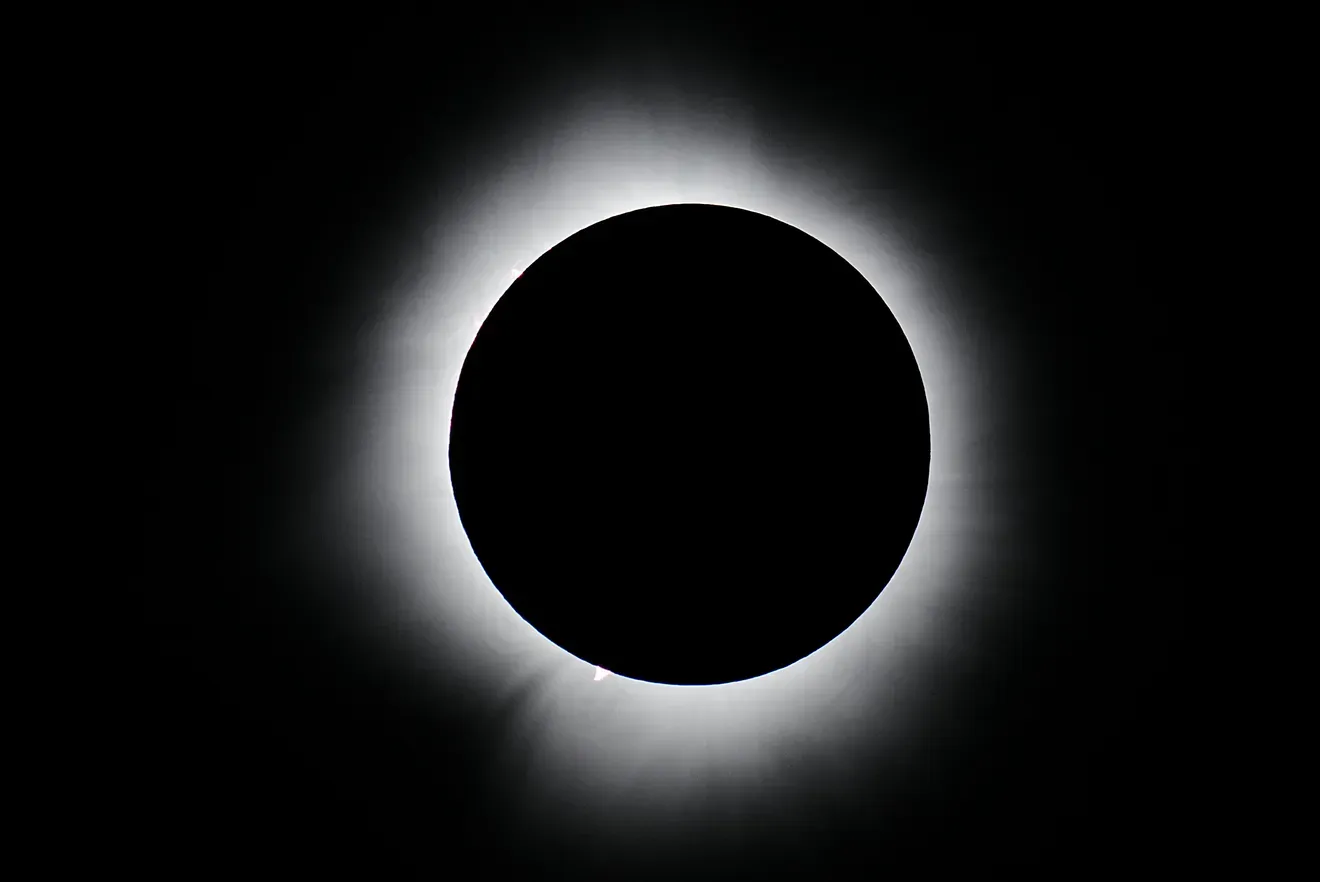
I should have gone to see the preview screening of “Civil War” last Monday, but I opted to drive up north to look at the eclipse instead. Which did not disappoint: The moment when the moon slipped fully between the Earth and sun and the corona emerged in its full end-times splendor was a lifetime experience – our nearest star revealed in negative, a mane of illumination streaming out around it and, down toward the bottom of the black circle, the orange flame of a massive solar prominence. My wife and friends and I were sitting in folding chairs on the town green in Danville, VT, and there was a collective inhalation of breath and scattered applause from the 200 or so people gathered there as a little part of our known galaxy lined up with casual mathematical grace. It lasted just over two minutes, during which the streetlights flickered on in what felt like a genuflection.
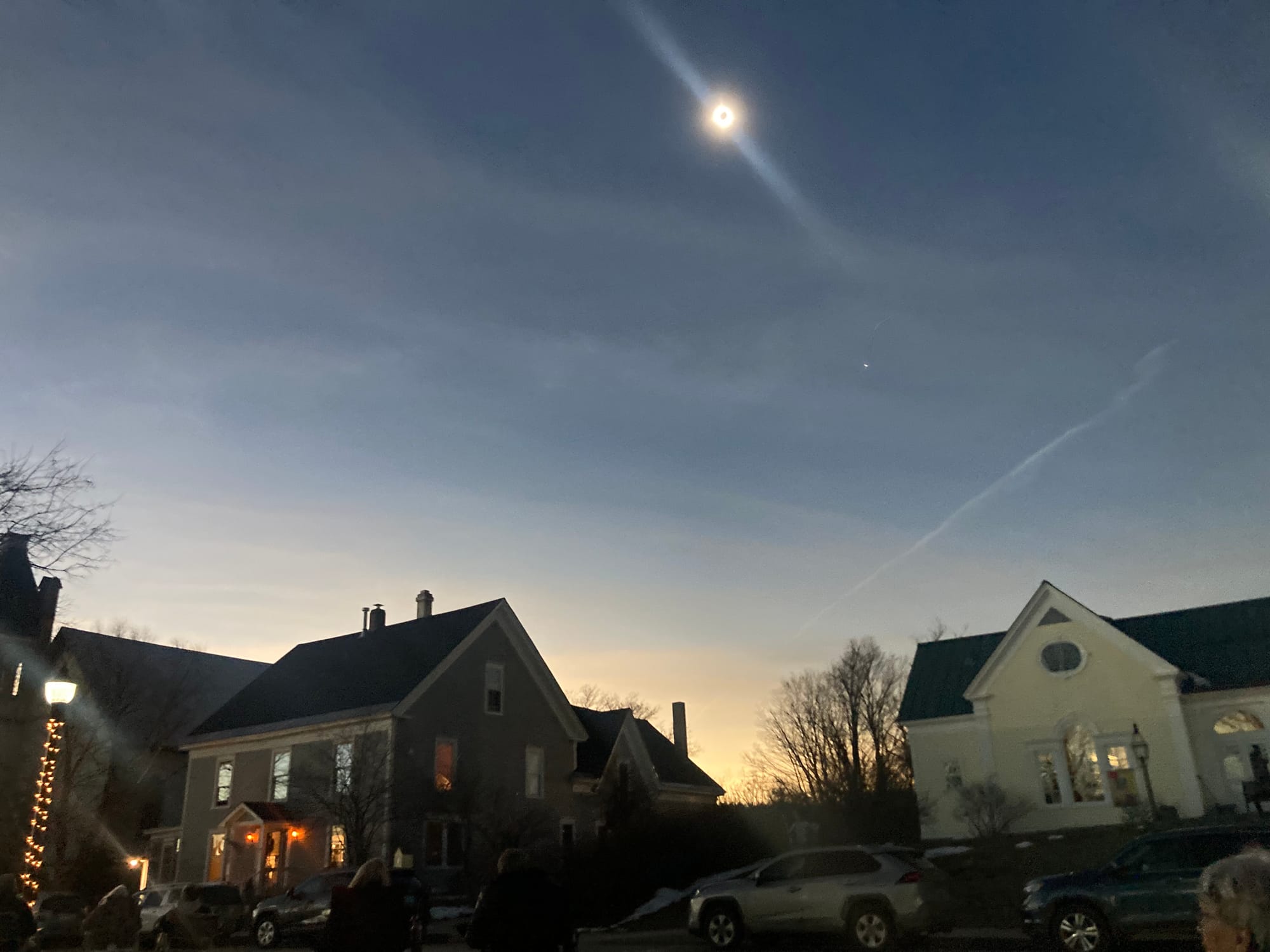
My older sister, meanwhile, was stuck in a traffic jam 10 miles to the south, just out of the totality. She saw a 99-percent eclipse, and I wanted to say to her that it’s no big deal, that something’s always aligning with something somewhere in the universe, that it was just three rocks in a straight line, one made of fire, one mostly water, and the third a small, dusty cue ball that is exactly the right size to cover a giant star when seen from 238,900 miles away. That’s what I wanted to say. But I didn’t; I just said I was glad she saw as much as she did. An eclipse is necessary proof that humanity and human beings are very, very, very small, the tiniest of organisms swimming in an endless soup, and it's humbling enough from wherever you see it.
The thing is, human beings are also enormous universes on our own, each of us filled with teeming organic life: we’re both micro and macro. One of our eclipse-watching group was a doctor, an infectious disease specialist at one of Boston’s bigger hospitals, and at one point it came up that she had been a talking head in a recent documentary about our disappearing gut biome – the bacteria that fill our digestive system and keep us healthy in ways we’re only just beginning to fathom. Suitably impressed, my wife and I dialed up the documentary on our return home and watched it, and I recommend you do as well: it’s called “The Invisible Extinction” (2023, ⭐ ⭐ ⭐ 1/2) and it’s available as a $4 streaming rental on Amazon, Apple TV, and YouTube. Fascinating stuff, as microbiologist Dr. Martin Blaser and his wife and colleague, microbial ecologist María Domínguez-Bello, travel around the world researching the ways in which the microbial masses that live inside us have been decimated by antibiotics and how replacing them has led to documented improvement in patients suffering from food allergies, digestive disorders, asthma, obesity, and even autism. Sounds like woo-woo fringe material, but everyone involved (including my eclipse companion) are high-level medical professionals with years of practice and research under their belts. Just be prepared for a lot of poop talk, which comes with the territory.
I reviewed two new theatrical releases for the Washington Post this week: Alice Rohrwacher’s wonderful “La Chimera” (⭐ ⭐ ⭐ 1/2) and the less-than-wonderful romantic fantasy “The Greatest Hits” (⭐ ⭐, also streaming on Hulu). Paid Watch List subscribers can read the reviews below the paywall. Have a good weekend!
Feel free to leave a comment or add to someone else's.
If you’d like to become a paid subscriber – for which you would have the author’s gratitude – you can sign up to do so by clicking this button:


